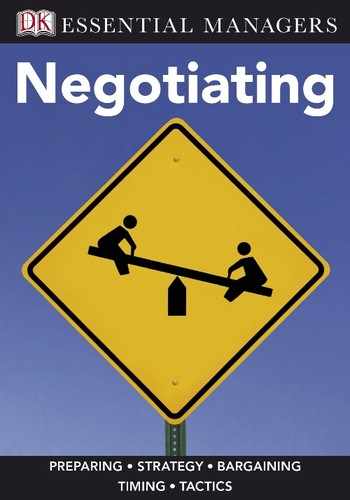Managing Emotions
In the heat of a negotiation, the emotions you display can significantly influence the emotions of the other party. Effective negotiators try to synchronize their behavior with the other person’s, developing an interpersonal rhythm that reflects a shared emotional state.
Understanding the approaches
There are three types of emotional approach in negotiations: rational (having a “poker face”), positive (being friendly and nice), and negative (ranting and raving). Some negotiators believe that exposing their emotions to the other party makes them vulnerable and will result in them giving away too much of the pie, and so try to always keep a “poker face” when they are negotiating. They also believe that emotional displays may result in an impasse or in defective decision-making, or cause negotiations to end.
Other negotiators believe that displaying positive emotions enhances the quality of the negotiated agreement, because a good mood promotes creative thinking, leads to innovative problem-solving, and smoothes out communication. Negotiators with a positive approach use more cooperative strategies, engage in more information exchange, generate more alternatives, use fewer hard tactics, and come to fewer impasses than negotiators with a negative or rational mood.
Strategic use of anger
Some negotiators successfully use displays of anger strategically to try to encourage the other party to agree to their demands. They aim to gain concessions from their opponent because the other party takes their anger as a sign that they are close to their reservation point. Inducing fear in their opponent pushes that person to cave in and agree. It sends the signal that they would rather walk away from the table without reaching an agreement than settle for less than what they want. The opponent may also wish to end the unpleasant interaction sooner by giving in.
Being negative
Negotiators who use the negative approach display anger, rage, and impatience in order to influence the other party. Anger is sometimes used strategically, but negotiators who are genuinely angry feel little compassion for the other party, and are less effective at expanding and slicing the pie than positive negotiators. They tend to achieve fewer win–win gains when angry than when they experience positive emotions. Angry negotiators are also less willing to cooperate and more likely to seek revenge.
Of the three emotional strategies, the positive and rational approaches are more effective than the negative approach in achieving targets in an ultimatum setting. The positive approach is more helpful in building a long-term, constructive relationship than the rational or negative methods.
Using emotional intelligence
When negotiators are emotionally overwhelmed, their mental capacity to negotiate effectively is impaired. To overcome this, you must manage your emotions intelligently. You need to be aware of the emotions you are experiencing and be able to monitor and regulate them, and you need to find ways to empathize with the other party. For example, when the US Secretary of State James Baker was negotiating with Hafez al-Assad, President of Syria, he had to make a conscious attempt to modulate his irritation. Although he was very angry when President Assad retracted from an earlier commitment, he used the term “misunderstanding” rather than openly displaying his anger.
Do I use emotional intelligence when negotiating?
Am I able to make an emotional connection with my counterpart, even if I do not know them very well?
Am I able to judge when my own emotions threaten to affect my ability to make rational decisions?
Can I manage my emotions to ensure that I am always effective?
Am I able to react in a measured way, keeping my emotions under control, even if the other party is using value-claiming tactics or behaving in a manner that I do not agree with?
